The Glory of Africa Part 9
Learning wisdom is a life long journey. Everyday of our lives, we learn information about various subjects and about life in general. We (who are black human beings) are the first human beings on Earth. Therefore, our history, our cultural experiences, our excellent power, and our determination are glorious. Not to mention that our excellent power of determination has been shown fully around the globe too. Today in the early part of the 21st century, we face many issues, but the same greatness is found within our black souls. The greatness of Kush and Songhai is in us. Our ancestors have survived some of the worst experiences in human history (like the Maafa and various genocides). Still, we exist today as scholars, engineers, lawyers, athletes, musicians, teachers, social activists, judges, scientists, astronomers, astronauts, and other contributors to the world society. We still rise. Also, there is nothing wrong with getting advice from mentors or from other great human beings. Gaining insights from a myriad of quarters is very vital in developing our consciousness.
There has always been discussions about economic empowerment in our community. Many people talk about the growth of black businesses, investing in black banks, and boycotts. First, I do believe in legitimate boycotts, because they work and they are crucial in developing power. For example, history teaches us that mass social movements and actions of resistance has caused change like the Montgomery Bus Boycott, the Memphis sanitation strike, etc. I have no problem with legitimate banks (owned by black people) investing in our communities. I have no issues with teaching black youth about financial literacy. Regardless of our views on economics, black people have every right to learn about financial literacy, so strategies to develop our wealth can exist. Do I believe in black capitalism? The answer is No. Laissez Faire Capitalism, as an economic system, contributed to the Maafa, the slave trade, massive poverty, environmental degradation, imperialism, colonialism, neo-colonialism, and other forms of nefarious injustices for centuries (as documented by words and research of Walter Rodney, Fred Hampton, WEB DuBois, Assata Shakur, Dr. Martin Luther King Jr, and Malcolm X). Therefore, I believe in progressive economics (of living wages, of universal health care, of anti-austerity, of investments in infrastructure, of job creation programs, etc.) in order for our black people to reach our highest potential. We must struggle and fight for social and political rights. Also, there is another point to be mentioned. There is no solution unless we address poverty and economic inequality in the world. Many people want to blame poor people collectively for their plight, which is wrong. Some believe in capitalist exploitation and that's wrong too. The free market can never liberate us. There are many poor people in our community who are hardworkers, very strong, and very resilient. Yet, they have trouble paying for food consistently, some struggle to get an education, and others have issues in supplying their other needs because of lax wages and economic issues (which is caused heavily by capitalist exploitation). In the final analysis, suffering people need jobs, investments, an end to discriminatory policies, better access to education, and a rebuilding of communities. Therefore, we should also fight for employment opportunities, for a living wage federally, for universal health care, and for other progressive investments in rebuilding poorer communities. These investments must come from the private and public sectors (even Congress has the right to execute monetary resources to improve the conditions in American society as found in Article I, Section 8. Also, it's morally right to use collective power to benefit our community in general). I believe in economic justice whereby the working class and the poor unite in a class struggle to make sure that their economic rights are preserved. I reject capitalist exploitation. We are also in a struggle to fight against racism, against police brutality, and against other injustices. Real change is what we advocate.
Also, I love Africa too. We are all from Africa and Bless Africa.

The Continent of Africa
Africa is the homeland of my ancestors. It is the Motherland. It is made up of diverse peoples, languages, ethnic groups, cultures, and nations. Throughout my life, I have researched many facts about Africa in great detail. It is the second largest continent on Earth in land and in population. It has 11.7 million square miles. Right now, Africa has more than 1.1 billion people. Therefore, Africa accounts for about 15% of the world’s population. Some of its largest cities are Lagos, Cairo, Kinshasa, Johannesburg, Khartoum, Dar es Salaam, Alexandria, Abidjan, Kano, and Casablanca. The north of the continent is surrounded by the Mediterranean Sea. There is the Suez Canal, the Red Sea, and the Sinai Peninsula along the northeast of Africa. The Indian Ocean is found in the southeast of Africa. The Atlantic Ocean borders on the West of Africa. Africa has the youngest population of any continent in the world. Algeria is the largest country of Africa in land size. Nigeria has the largest population of Africa. Nigeria also has the most amount of people of black African descent than any nation in the world. Africa is the origin of human beings. Modern Homo sapiens sapiens migrated out of Africa and populated the rest of the globe. Once, the Sahara was a green fertile valley. After the Ice Age and by 5,000 B.C., the Sahara region became more dry and warm. The rapid desertification of the Sahara came about in ca. 3,500 B.C. due to a tilt in the Earth’s orbit. Today, many African nations are growing rapidly economically in the 21st century. There are issues of democratic rights, economic development, trade, environmental issues, women's rights, and other issues that are discussed and debated in our generation. We see massive improvements and problems in Africa. One thing is certainly true. Tons of Africans are fighting for justice and are dedicated to the liberation of Africa in 2016 and beyond.

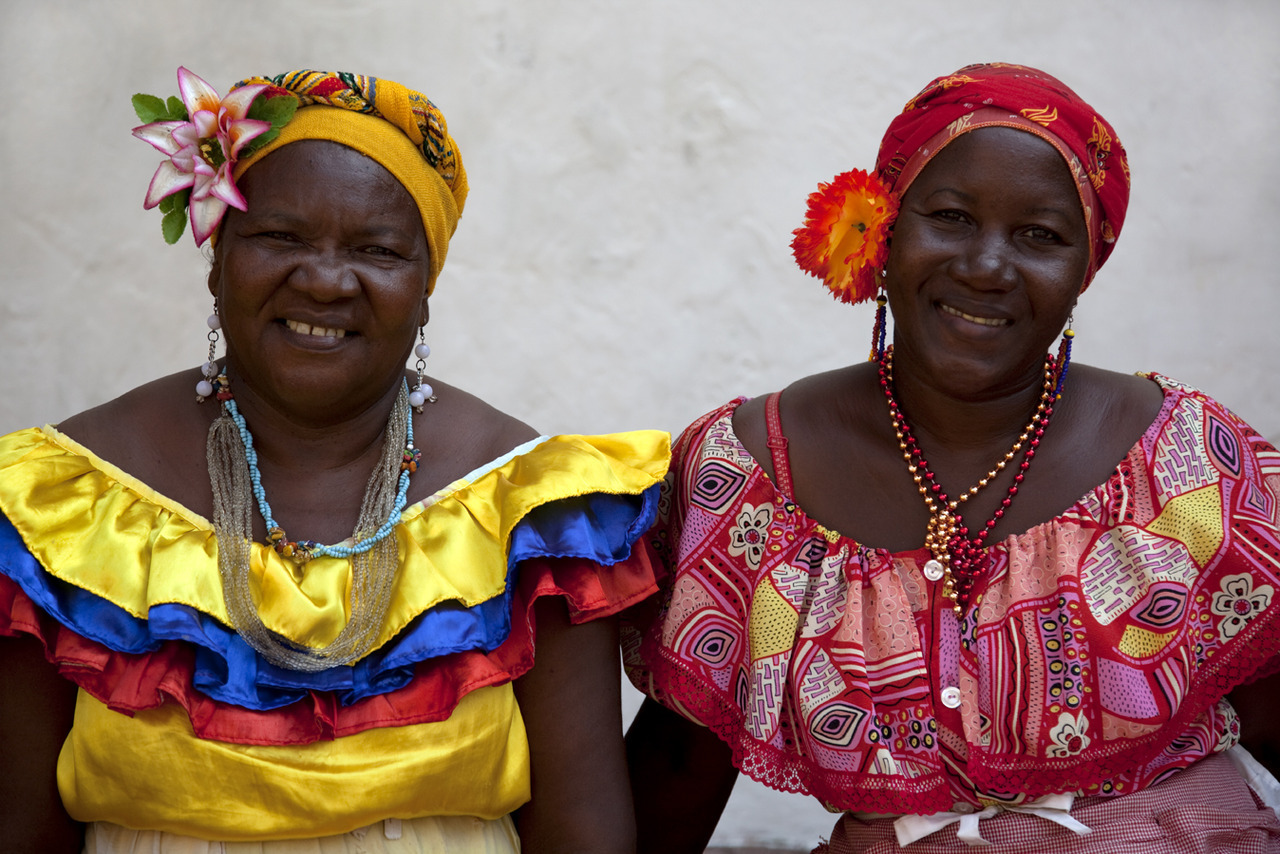
African Diaspora Information
The African Diaspora is an important part of our identity as human beings. It is always important for anyone, who wants to understand Africa more comprehensively, to study the African Diaspora. The African Diaspora includes the communities worldwide that are made up of people of black African descent. Therefore, as a black American, I am a member of the African Diaspora. The African Diaspora is found in the Americas, Europe, the Middle East, Asia, and other areas across the Earth. Many people of the African Diaspora are descendants of West and Central Africans who were enslaved by evil people and shipped to the Americas during the Maafa from the 16th century to the 19th centuries. During the 1990’s, the African Diaspora was coined. Also, the African Diaspora existed before the 16th century as African migrations out of Africa existed thousands of years ago. People of the African Diaspora have made key roles in shaping world history. Historians, scholars, and anthropologists document the impact of the African Diaspora in music, science, politics, athletics, and other aspects of human cultural development. The African Diaspora is huge too. In Brazil, there are over 55 million black and multiracial people. In the United States of America, there are over 42 million black people, in Haiti, there is almost 9 million black people. There are millions of people of black African descent in the Dominican Republic, Colombia, France, Jamaica, the United Kingdom, Mexico, Cuba, Italy, Puerto Rico, Peru, Germany, Canada, Spain, Ecuador, Trinidad and Tobago, etc. People of black African descent also live in Pakistan, India, Saudi Arabia, Iran, etc. The more that we study about the African Diaspora, the more that we find out about ourselves since all peoples are descended from human beings from Africa thousands of years ago.
These are Afro-Brazilian human beings. In Brazil, there is a strong black culture. For long centuries, Afro-Brazilians have been social activists, political leaders, scientists, and other heroes. Many black people in Brazil are standing up for their human rights as racism is an evil, global phenomenon. I read about the 2015 Afro Hair Pride March where black Brazilians celebrated their black hair and black culture. It took place in Sao Paulo. It was called Marcha do Orgulho Crespo. In that rally, tons of black women showed their hair and their voices to oppose injustice and desiring black liberation. One Sister there was Professor Maria do Carmo who supported the rally not only to promote black hair. She wanted to advance the self-esteem and the great contributions that black people have made in Brazilian society too. We also see black people developing a lot of culture in the city of São Gonçalo. We believe in the concept of identidade negra (black identity). Brazil has a long history of Afro-Brazilians standing up for justice. There was the Quilombo movement where Zumbi dos Palmares was a black hero of Brazil. Benedita da Silva is also a current civil rights Afro-Brazilian Sister too. Raissa Santana represents new history for Afro-Brazilians. She is a humble and beautiful human being inside and out. Raissa has also spoken about inspiring young black girls and young black women to pursue their own dreams and aspirations. That is key, because when the Sisters win, we all win. I wish the absolute best for Sister Raissa Santana and the rest of the Afro-Brazilian community.

Afro-Dutch
The Afro-Dutch include people who have ties to the areas of Aruba, Bonaire, Curacao, Sint Maarten, and Suriname. Many people don’t know that the Netherlands had great involvement in the evil slave trade. The Dutch West India Company and the Dutch East India Company were involved in massive economic exploitation of black African human beings. Black people were in the Netherlands in the 1500’s. Dutchmen brought their slaves to the Netherlands from Dutch Brazil, Suriname, Netherland Antilles, and Aruba. Slavery is evil, brutal, and has no place in the world. Suriname got their independence from the Netherlands over 35 years ago. Today, Afro-Dutch human beings live in the Netherlands and throughout the world. There is a far right movement in the Netherlands that promote hatred and bigotry, but Afro-Dutch heroes have fought against these evils folks. Many people in the Netherlands refuse to discuss about race in serious terms since some want to promote the post-racial myth. The truth is that we must discuss about race, class, and gender honestly in order for human liberation to exist in a real, succinct fashion.
A lot of the Afro-Dutch came from Suriname. They live in South Holland, North Holland, Flevoland, Utrecht, Bonaire, Sint Eustatius, Saba, and other urban areas. Many of them speak Dutch, which is a cousin language to English and German. There are many activists who are Afro-Dutch too. One is Quinsy Gario. He was born in 1984 and he opposes Zwarte Piet. Zwearte Piet is a character that many white Dutch people use in blackface which represents a character in the Santa Claus myth. Zwarte Piet means Black Peter. Zwarte Piet is blatantly racist and protests have existed against it. Gario created the project Zwarte Piet is Racisme (Black Pete is Racism) about Zwarte Piet. There are also the great Black Heritage Amsterdam Tours (BHAT) that allows people (especially those of Black African descent) to have a tour of the contributions of the African Diaspora in the Netherlands from the 16th century to the present. People on these tours experience exhibitions, festivals, and a lot of education of real history plus real culture. The tour begins in Amsterdam’s central Dam Square. The tour leader and founder of the tour is the great Sister Jennifer Tosch. Jennifer Tosch said that even some Dutch families today blatantly lie about their forefathers’ involvement in slavery. Many places in the Netherlands traded in slaves in canal houses. I wish the absolute best for Sister Jennifer Tosch.
Bless the Afro Dutch people.

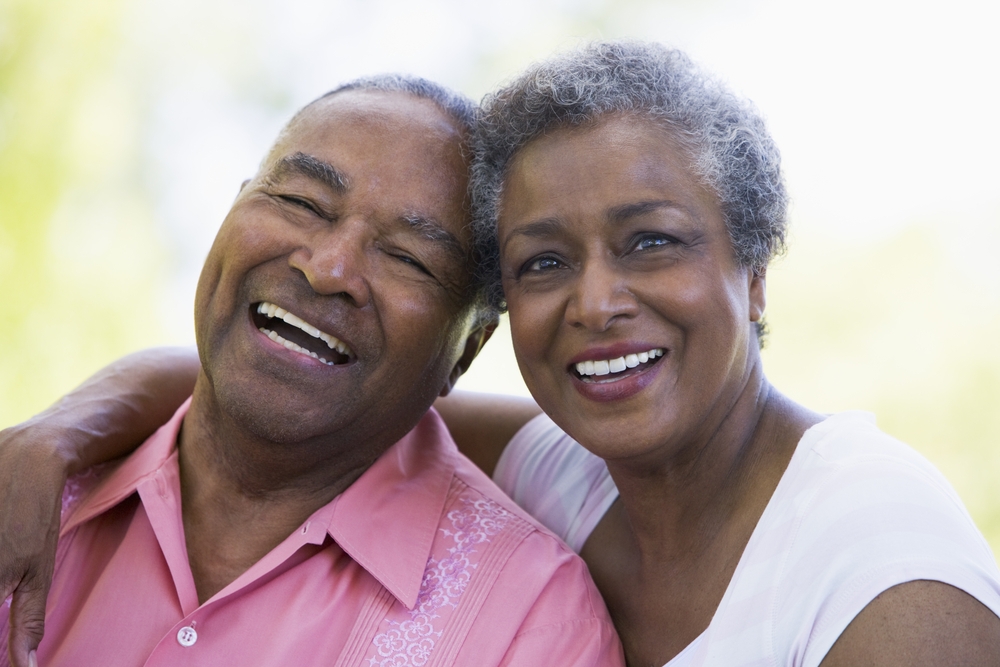

African Americans
There is no mention of the black African Diaspora without mentioning African Americans. I am an African American, so African American history and culture is personal to me. Malcolm X has said the phrase African Americans during the 1960’s and Paul Robeson talked about Afro-Americans during that time as well. I have lived in America for over 30 years and African Americans have lived in America since the 16th century. We, who are black Americans, have a long history of pain, struggle, triumphs, cultural innovation, and excellence. Our black ancestors suffered some of the worst mistreatment in human history, but we rise. In our generation, we rise too. We rise despite racism, discrimination, and bigotry. We are a loving people and we are an optimistic people as well. Currently, we live in a new decade, in a new millennium, and in a new century. We face new challenges and the continuation of old ones. Likewise, I never lose hope or faith. I will keep the faith and African Americans are known to make lemonade out of lemons on the real. African Americans have made tons of accomplishments in culture, medicine, politics, athletics, music, science, mathematics, anthropology, sociology, philosophy, and other aspects of human civilization. Our African American ancestors came into Americas via the evil Maafa (which was an African Holocaust). Most of our ancestors came from West and Central Asia. Also, many African Americans have ancestry from East Africa too. The Middle Passage was evil and brutal. It involved African people being kidnapped in Africa by European imperialists and forcibly shipped in ships across thousands of miles to the Americas. In those ships, white slave owners raped men, women, and children. Many Africans thrown up, many were killed by the slave owners, and many Africans rebelled to defend their humanity. The bones of many of our ancestors were in the Atlantic Ocean because of the brutality of racist cowards. The ancestors’ memories are never forgotten. Europeans traded slaves for resources and much of the evil Maafa has been documented by Olaudah Equiano, who was a victim of slavery. The international slave trade was a capitalist enterprise that caused unspeakable misery among innocent black human beings. Black people were in America during the 16th century. In 1619, African slaves were sent to Point Comfort or Fort Monroe in Hampton Virginia. Later, many of them came into Jamestown too.

10-12 million Africans were kidnapped and forcibly sent to the Western Hemisphere. Only 5% or about 500,000 people went to the American colonies. Most came into the West Indies and Brazil. By the 1700’s, slavery persisted and many black people used more rebellions (like the Stono Rebellion in September 1739 in South Carolina. 150 Africans heroically stood up to fight for justice and the local militia soon intercepted and killed most of them) to try to enact freedom in America. As the Revolutionary War came about, African Americans fought on both sides seeking freedom. Yet, even Prince Hall’s petitions to end slavery fell on deaf ears. The free black tradesman Crispus Attucks was killed in the Boston Massacre. Black and white soldiers fought side by side in the battles of Lexington and Concord including at Bunker Hill. George Washington (who was a slave owner, a racist, a Freemason, and a landowner) later banned any further recruitment of black people. Many famous Black British soldiers are people like Colonel Tye and Boston King were highly powerful in fighting. After the Revolutionary War, African Americans saw the hypocrisy of the Declaration of Independence (which stated that all men are created equal, but many of the Patriots readily oppressed black people in America) and the Constitution classifying black people as 3/5 of a person. The fight for justice continued. Slavery started to end in the North by the 19th century and the South continued to advance slavery. The North also had racism and discriminatory policies too, so racism is not just found in the South. It’s found everywhere. During the antebellum period, most African Americans were Christians like Richard Allen and many were Muslims too. Nat Turner enacted a slavery rebellion in the 1800's too in Southampton County, Virginia. African Americans had a huge role in the abolition movement from the 18th century to 1865. The evil Dred Scott decision (which was about the Supreme Court forcing Dred Scott to be a slave) promoted the increased urgency to abolish slavery. Harriet Tubman freed many African Americans from slavery and bondage and her contributions must always be honored.
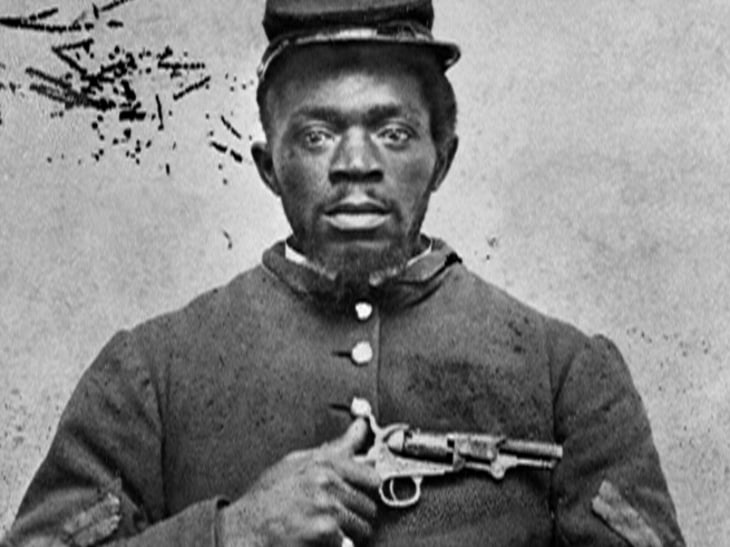
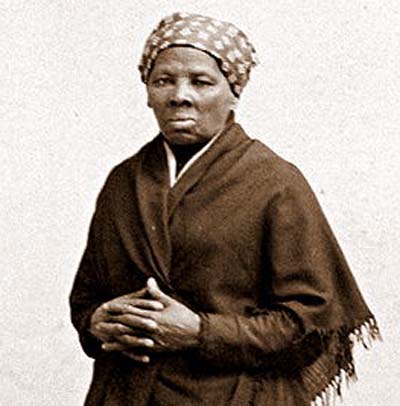
The evil great compromise of 1877 (that allow Union troops to leave their occupation of the South. Hayes was President and racist Democrats in the South governed after the military occupation of the South) caused Reconstruction to end and the new era of Jim Crow developed into the next level. Between 1885 and 1900, 2,500 lynchings, mostly of black people, occurred in the United States. Jim Crow was about white racist Southerners (most of whom were Democrats) using lynching, voter restrictions, murder, segregation, and other evil policies to deny the human rights of black people. That is why the Niagara Movement formed by WEB DuBois and others to fight for the human rights of black people. Also, Booker T. Washington promoted self-reliance, industry, and education too. I disagree with Booker T. Washington on some issues, but he wasn’t wrong in everything that he said. Jim Crow caused many black people to look inward and promote self-determination in places like Black Wall Street where many black businesses flourished. Black Wall Street was one of the wealthiest black communities in America during the early 20th century. The buildings on Greenwood Avenue housed the offices of almost all of Tulsa's black lawyers, realtors, doctors, and other professionals. The community was destroyed by white racist mobs in the Tulsa riots where white racists destroyed buildings and assaulted black people in Greenwood section of Tulsa, Oklahoma in 1921. Law enforcement dropped firebombs on buildings, homes, and fleeing families. Also, Jim Crow allowed oppression against black people to go unpunished. Plessy v. Ferguson in 1898 permitted segregation under the guise of “separate but equal” which is a lie. Segregation violated the principles of human freedom, civil liberties, racial justice, and human autonomy. In other words, anyone has the right to live where they want without oppression. Racial terror against black people continued across America. Organizations like the NAACP were formed to oppose this evil. By the 20th century, the fight for equality continued. It was the century of the color line.



African American newspapers promoted equality and justice. There were riots and the rise of Marcus Garvey existed in America. He or Marcus Garvey promoted pan-African unity and advanced businesses as a way to help black people throughout the world. He was a nationalist and wanted “Africa for the Africans.” Marcus Garvey (who created the UNIA organization) wanted black Americans to come into Africa (via the Black Star Line, which was a shipping and passenger line), so Africa can be developed. Marcus Garvey's views influenced the Nation of Islam and the Rastafari movement. He was supported by black people of every ideological perspective from nationalists to black socialists. By the early 20th century, African Americans moved North and West plus Midwest in the Great Migration. This was about black people escaping political discrimination, racism, and violence. They wanted better jobs and they were involved in developing the Harlem Renaissance and the Chicago Renaissance. This period saw more black people living in urbanized communities which caused groups like the Universal Negro Improvement Association and African Communities league, the Nation of Islam, A. Philip Randolph’s Brotherhood of Sleeping Car Porters (which was part of the American Federation of Labor) to grow in power. Ida B. Wells fought lynching and racism throughout her life. Black businesses were in existence too like Madam C. J. Walker’s company which promoted beauty products. Also, Madam C.J. Walker was a proponent of civil rights. Her friends and associates included Booker T. Washington, Mary McLeod Bethune, and W. E. B. Du Bois, among others. Prior to her death in 1919, Walker pledged $5,000 (the equivalent of about $65,000 in 2012) to the NAACP's antilynching fund. At the time it was the largest gift from an individual that the NAACP had ever received. Walker bequeathed nearly $100,000 to orphanages, institutions, and individuals; her will directed two-thirds of future net profits of her estate to charity. Mary McLeod Bethune was an educator, a civil rights worker, and the founder of Bethune-Cookman College. She was born in Mayesville, SC, on July 10, 1875. She worked with our community greatly and she desired total justice.


Josephine Baker performed in Africa and in France. She opposed Jim Crow throughout her life and she lived to see Jim Crow apartheid abolished in America. We should always remember the contributions of great black artists like Billie Holiday, Ella Fitzgerald, Lena Horne, and Sarah Vaughn. During the Great Depression, black people survived. The New Deal existed. The New Deal was a mixture of progressive policies and still discrimination existed against black people in dealing with those programs. Black people continued to fight for justice. Black people were in every American war which includes World War I and World War II. The Second Great Migration had more than 5 million Americans to travel from the South throughout America (from 1941 to 1970).
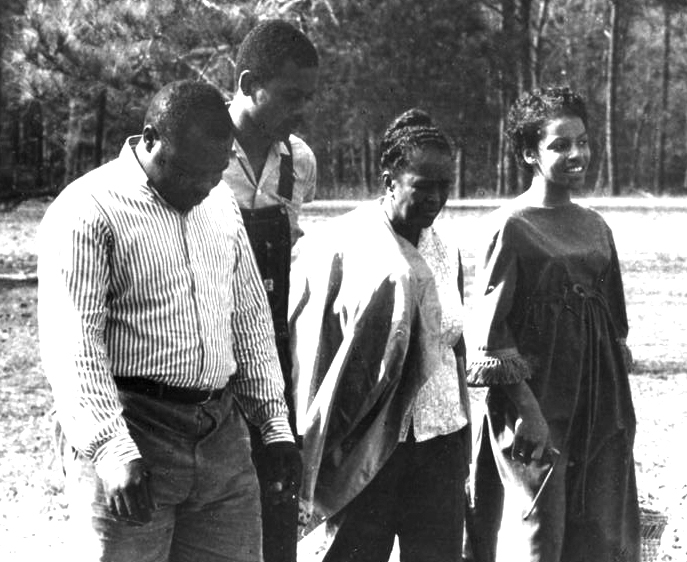
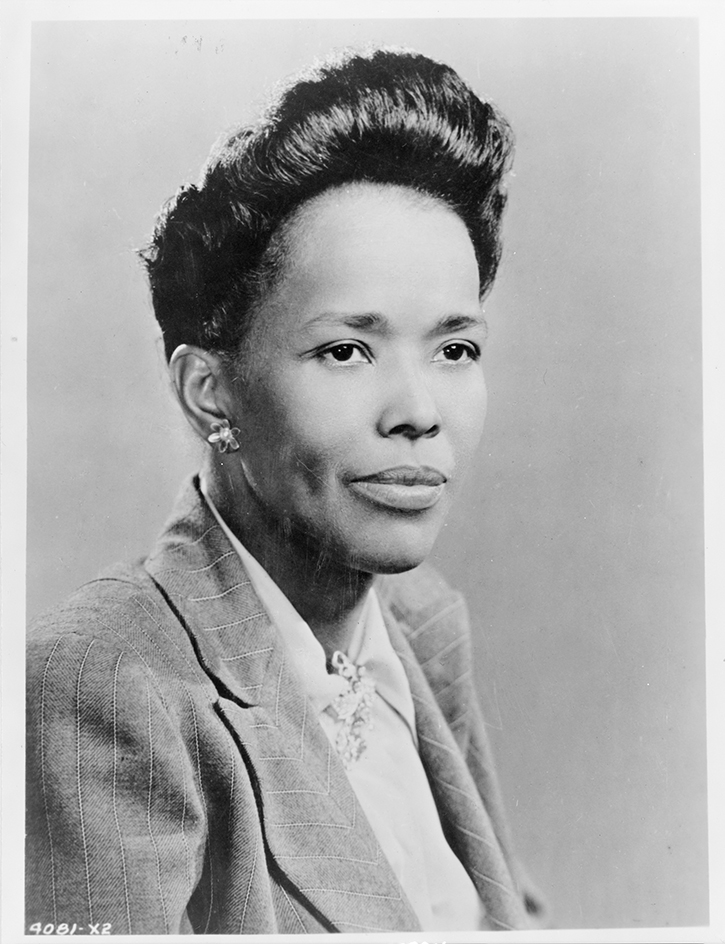
The modern day Civil Rights Movement existed in 1954. One of the many Grandmothers of the Civil Rights Movement would be Ella Baker and Septima Clark. By that time, the Brown V. Board of Education of Topeka existed that ending legal segregation in all public schools. Ruby Bridges was educated in an integrated school of Louisiana. Southern racists would fight that ruling for years to come. During this period (of Cold War America), the Urban League, the SCLC, SNCC, and other diverse black organizations would fight to end Jim Crow and advance economic plus political rights for African Americans. Claudette Clovin and Rosa Parks refused to go in the back of the bus in Montgomery Alabama. Afterwards the successful Montgomery Bus Boycott existed (which involved the black citizens of Montgomery, Alabama to protest discrimination in the bus system). Fannie Lou Hamer was another activist who fought for freedom. Fannie Lou Hamer would oppose the Vietnam War and defend the human rights of the poor in the world. Many people died as martyrs for the cause of freedom. The peak of the Civil Rights Movement existed in the Birmingham movement, the 1963 March on Washington, and during the 1965 Selma campaign (Black women like Annie Lee Cooper, Diane Nash, Amelia Boynton, and Viola Jackson were key in making the Selma movement victorious) for voting rights. Black men and Black women like Dorothy Height were involved in the freedom struggle.



Also, more other voices (who rejected nonviolent protest unconditionally) existed to promote self-defense and black self-determination like Malcolm X, the Black Panther Party, and the Black Power movement in general. The Black Power movement (which included black nationalists and other progressive black liberation movements) should be recognized for their love of Africa, their advocacy of self-defense, their belief in self-determination, and their emphasis on black solidarity. Tons of music that black people have shown exploded throughout the 20th century and beyond. Aretha Franklin is a woman whose music stirs up your soul. Her music is timeless. She was ahead of her time too. She has an enumerable amount of classic records. She was born in Memphis, Tennessee and she was raised in Detroit. Musicians from the Supremes, the Temptations, Marvin Gaye, Otis Redding, Stevie Wonder, Gladys Knight, Tina Turner, Irna Thomas, Fontella Bass, and other human beings have shown black excellence in its finest. Another hero was Patricia Stephens Due. For throughout her life, she fought for civil rights in Florida. Ossie Davis, Ruby Dee, and their children protested the Vietnam War. Social activism is a must in our world. Ossie Davis and Ruby Dee didn't just protest. They were part of organizations that fought against racism, atomic weaponry usage, the death penalty, unjust wars, police brutality, etc. They were arrested for protesting police brutality. Gloria Richardson is a great civil rights hero. She fought for the human rights of black people in Cambridge, Maryland. She is now 94 years old. She was an ally of Malcolm X and she opposes police brutality. To this very day, she is helping many people in New York City.
After the evil assassination of Dr. Martin Luther King Jr., African Americans entered a new phrase. We saw the rise of the black middle class and the black rich. During the 1970's, more black people came into college, became mayors, and were elected in Congress. Soul Train existed which shown great black music and culture constantly. Many black people during the 1970’s moved into the suburbs while the poor black communities suffered neglect, police brutality, austerity, discrimination, economic deprivation, and other evils (via the policies of the 1%). During the 1970's, the Black National Political Convention was held in Gary, Indiana. The 2 factions of the convention were black revolutionaries who wanted political independence from the 2 party system sincerely and those who wanted black people to be part of the Democratic Party apparatus. The decade of the 1970's saw the growth of affirmative action, the Attica rebellion, resistance to busing in Boston, and more developments in America. Black people since 1968 have increased our presence in politics, but economic inequality has grown in our community because of neoliberal economic policies. Jesse Jackson ran for President in 1984 and in 1988. Also, this time saw the continued growth of black authors (like Maya Angelou, Audre Lorde, Toni Morrison, etc.), scholars, athletes, singers, architects, teachers, etc. We can never forget about the War on Drugs and the crack epidemic (especially during the 1980’s) that devastated the lives of many black Americans. We have seen black Governors and Black Senators increase since the 1970’s. Shirley Chisholm ran for President in 1972 which was very historic too. We also seen the contributions of the black wealthy from Oprah Winfrey to Michael Jordan. Sister Marva Collins was not only a great educator in Chicago. She was a hero. She used unique techniques to help educate students in Chicago. The power and growth of hip hop, R&B, soul music, neo-soul, jazz, etc. continued. Lauryn Hill is a legend. She is not only one of the greatest artists of our generation. She also is a very intelligent Sister with a massive amount of consciousness on subjects relating to spirituality, love, life, and fighting injustice. Her ode to Roberta Flack's Killing Me Softly outlined her great vocal range. In 1998, when I was 15, we all remember the Miseducation of Lauryn Hill album. That album was a classic and it motivated tons of people to do better with her own life.

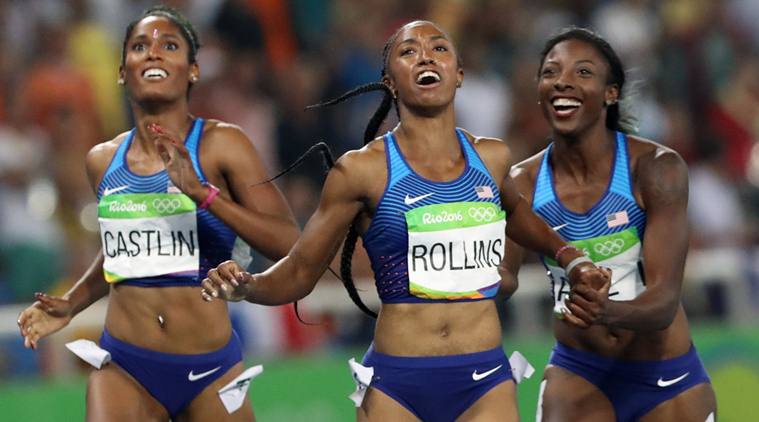



Afro-Canadians
Afro-Canadians are a very great and resilient people. They make up a minority of Canada’s population, but they have an extensive history and cultural heritage. Afro-Canadians are from the United States, some are born in Canada, some are from Africa, some are from South America, and some are from the Caribbean. Therefore, they include Jamaicans, Nigerians, Haitians, Afro-Latinos, etc. Most Black Canadians are of Caribbean origin. There are about 945,665 Afro-Canadians living in Canada today. Most are from Ontario, Quebec, Alberta, British Columbia, and Nova Scotia. About 30% of Black Canadians have Jamaican heritage. 60% of Black Canadians are under the age of 35. 57% of Black Canadians live in the province of Ontario. 97% of Black Canadians live in urban areas. The first recorded black person to set foot on land in Canada was a free man named Mathieu de Costa. He was traveling with the navigator Samuel De Champlain. He arrived in Nova Scotia between 1603 and 1608. De Costa was the translator for the French explorer Pierre Dugua, Sieru de Monts. One slave in Canada was Olivier Le Jeune. He was the first recorded black slave transported from Africa to Canada. He was from Madagascar. Back then, both Native Americans and black people were slaves. Centuries ago, a lot of slaves in Canada lived in Montreal. Quebec and Trois-Rivieres were other regions with a high slave population too. Many people in Canada also aided runaway slaves. This caused the government to Issue an ordonnance in 1734, stating that the public should not employ runaway slaves and captains should not carry them out of the territories without severe penalty. During the period of 1769-1794, numerous advertisements existed for the return of runaway slaves in the Quebec Gazette. During the American Revolutionary War (which lasted from 1775 to 1783), the British promised freedom to the slaves who fought for the British. Many slaves became free in Nova Scotia and some were brought into slavery again. After the Revolutionary War, about 3,000 black people were transported to Nova Scotia. Black people faced discrimination, segregation, and slavery in Nova Scotia.
Due to the failure of the British government to support the settlement, the harsh weather, and discrimination on the part of white colonists, 1,192 Black Loyalist men, women and children (in 14 ships) left Nova Scotia for West Africa on January 15, 1792. They settled in what is now Sierra Leone, where they became the original settlers of Freetown. They, along with other groups of free transplanted people such as the Black Poor from England, became what is now the Sierra, also known as the Krio. Under pressure of the new refugees, the city of Saint John amended its charter in 1785 specifically to exclude blacks from practicing a trade, selling goods, fishing in the harbor, or becoming freemen; these provisions stood until 1870. Although by then, they were largely ignored. Slavery was abolished in Nova Scotia in 1787 and in 1793 in Ontario or Upper Canada. In the War of 1812, the British took back slaves seeking refuge to Halifax, Nova Scotia. Others settled in southwestern Ontario. By 1834, slavery was abolished in all British territories. The Underground Railroad (which lasted from the 1820’s to the 1860’s) saved lives and brought thousands of ex-slaves into Canada. The refugee slaves which settled in Canada did so primarily in South Western Ontario, with significant concentrations being found in Amherstburg, Colchester, Chatham, Windsor, Sandwich. These settlements acted as centers of abolitionist thought, with Chatham being the location of abolitionist John Brown's constitutional convention which preceded the later raid on Harper's Ferry.
While the first newspaper published by a black woman was founded in North Buxton by the free black woman Mary Ann Shadd which pressed for Black emigration to Canada as the best option for fleeing African Americans. Detroit was a major transit point with locals like Chatham and Sarnia in Ontario being a final destination. Black people still faced segregated lives and discrimination in Canada. They went to segregated schools. In 1850, Canada West passed the Common Schools Act, which segregated the school system. Nova Scotia passed a similar act later. Blacks went to sub-par schools that were under-funded. Many black people settled in the Vancouver Island district after 1858. Governor Douglas encouraged black immigration from California on the condition that most would defend the territory. Many black people left California because of discriminatory resident taxes. 400 hundred black families sailed to Canada. One famous black person the territory was John Sullivan Deas, a businessman. Mifflin Gibbs was the first black Canadian politician and he was elected to the Victoria City Council. Anderson Ruffin Abbott, the first Black Canadian to be a licensed physician, participated in the American Civil War and attended the deathbed of United States President Abraham Lincoln. Because of segregation and other grievances, after the Civil War in the U.S., Canada experienced a decrease of the black population, from 60,000 to 18,000, in a thirty year period.
Some Afro-Canadians lived in western Canadian areas like Manitoba and Saskatchewan. Some settled in Alberta between 1905 and 1909. During WWI, few black people served with white Canadian soldiers. Many black Afro-Canadians worked in ditches and trenches without experiencing combat. By World War II, many black people served in mixed regiments and refused to serve in construction regiments. Most black people in Canada (like in America) wanted to be free after they fought in the war. From the 1950’s to the present, many black immigrants from the Caribbean came into Canada in a higher level. Black Canadians has contributed greatly to Canadian culture. Many of the first visible minorities to hold high public offices were black like Michaelle Jean, Donald Olive, Stanley G. Grizzle, Rosemary Brown, and Lincoln Alexander. In 1975, a museum telling the stories of African Canadians and their journeys plus contributions was formed in Amhertsburg, Ontario. It is called the Amberstburg Freedom Museum. In the Atlantic region of Canada, the Black Cultural Centre for Nova Scotia was formed in Cherrybrook. Today, police brutality issues persists in Toronto and other places of Canada. Black Canadians have made great contributions in society.


Afro-Cubans
Afro-Cubans are here and strong. Most of their ancestry came from West Africa. They have developed influences in Cuban literature, music, art, dance, and other aspects of culture. Over one million Afro-Cubans live in Cuba presently. Many of them have African origins like from the Yoruba (or Lucumio, Akan, Arara, Congo, Igbo, Carabali, Madingo, Fula, Makua, etc.). Afro-Cubans are found all over Cuba. Most are found in Eastern Cuba. Havana has the highest number of black people of any city in Cuba. Many African immigrants recently are coming into Cuba from Angola especially. Many immigrants came from Jamaica, and Haiti. They mostly settle in the eastern part of the island. Afro-Cuban populations have increased after the 1959 Cuban revolution, which was led by Fidel Castro. This was caused by the mass migration from the island by the mostly white Cuban professional class. Some Afro-Cubans have left Cuba to America too. There have been Afro-Diasporic linkages between Afro-Cubans and African Americans as documented by Caribbean Historian Frank Andre Guridy, Associate Professor of History and African and African Diaspora Studies at the University of Texas at Austin. He is the author of Forging Diaspora: Afro-Cubans and African Americans in a World of Empire and Jim Crow (Chapel Hill: University of North Carolina Press, 2010). There were massive cultural interactions among Afro-Cubans and African Americans from 1898 to the start of the Cuban Revolution. Both communities experienced racism and discrimination then and now.
Many Afro-Cubans went into Nigeria (which is the home of Yoruba and Igbo cultures) as ex-slaves during the 17th and 19th centuries. In Equatorial Guinea, they became part of the Emancipados; in Nigeria, they were called Amaros. Despite being free to return to Cuba when their tenure was over, they remained in these countries marrying into the local indigenous population. Many Afro-Cubans fought to free Angola from imperialism during the Angolan Civil War. Haitian Cubans exist too. Afro-Cuban religion can be broken down into three main currents: Santeria, Palo Monte, and Abakuá, and include individuals of all origins. Santería and Abakuá both have large parts of their liturgy in African languages (Yorùbá, Igbo and Ñañigo, respectively) while Palo uses a mixture of Spanish and Kikongo. Santería is syncretized with Roman Catholicism. Afro-Cuban music uses rhythms, instruments, and other facets of sound. Even today, racism is found in Cuba. Many black people are excluded from tourism jobs. Many people shun discussions about racism in Cuba. Also, many Afro-Cubans are standing up to oppose racism and oppression in Cuba too. Many leaders of the Cuban Revolution including Fidel Castro publicly condemned racism. Yet, racism is still a serious problem in Cuba. During the 1920's and 1930's Cuba experienced a movement geared towards Afro-Cuban culture called Afrocubanismo (or the promotion of black culture, literature, painting, etc. in Cuba). Poems and essays by black writers began to be published in the 1930's in newspapers, magazines and books, where they discussed their own personal heritage. Afro-Cuban and Afro-Cuban heritage artists such as Nicolás Guillén, Alberto Arredondo and Emilio Ballagas brought light the life experiences of Afro-Cubans. Today, there are numerous Afro-Cuban human rights activists, athletes, musicians, poets, writers, actors, actresses, etc. who are contributing their talents in Cuba and throughout the world as well. Many well-known Afro-Cubans who live in Cuba or elsewhere are Gina Torres, X Alfonso, Laz Alonzo, Lola Falana, Faizon Love, Ana Fidelia Quirot Moré, Regla Torres, Martín Dihigo, and Yarisley Silva.
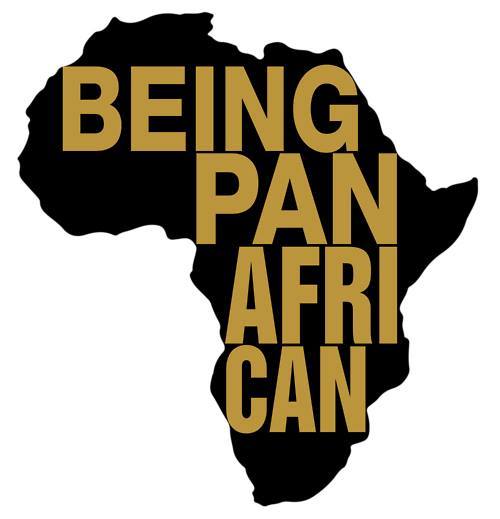

Pan African movements
There can be no full expression of the black human experience without mentioning the concept and the movement of Pan-Africanism. Black people worldwide either follow it, know about it, or are influenced by it. Pan Africanism is the view that people of black African descent should unite socially, politically, and economically in order for justice to exist in the world. Pan Africanism has its modern roots from the 19th century and today it is an international movement. Back during the 19th century, many Pan-Africanists wanted to return to Africa as a way to escape the tyranny of slavery and racial injustice. From the 20th century to the present, Pan-Africanism has been influenced by Marcus Garvey’s Back to Africa movement of the 1920’s and W.E.B. Du Bois’ work in Pan-Africanism too. Pan-Africanists and black nationalists grew in part because of the lynching of black people, the racism found in society, and the resistance to Jim Crow apartheid. Pan-African congresses existed back during the early 20th century. During the Paris Peace Conference just after World War I, the Pan-Africanist Congress petitioned the colonial powers to have black self-determination in Africa and an end to segregation to America. Their petition was ignored, because the Paris Peace Conference was dominated by white aristocrats, capitalists and overt imperialists who didn’t want true African liberation or justice at all. New Congresses of pro-Pan-African views spread in Europe, and New York City. George Padmore was one leading Pan-Africanist from Trinidad. Padmore was once Communist, but left Stalin as he viewed Stalin as too authoritarian (which he was) and too non-interested in African liberation. By this time, many people started to see Stalin as not a true representation of authentic socialism, but a totalitarian ruler. Padmore set about putting a Pan-Africanist program into action, forming the International African Service Bureau and launching a journal that aimed to unite Black liberation struggles in Africa, the Americas and the West Indies. He was assisted in this project by another Black Trinidadian, CLR James, who had recently joined the Trotskyist opposition to Stalin. During the Second World War, pan-Africanism grew in leaps and bounds. A Fifth Pan-Africanist Congress was held in October 1945, in Manchester, England, only a few weeks after the war's end. This time the meeting attracted the future leaders of independent Africa, including Kwame Nkrumah, who would lead the struggle to turn Britain's Gold Coast colony into Ghana, and Jomo Kenyatta, who led the opposition to British rule in Kenya.
Padmore was joyful of the new generation of black leaders who fought for independence. Many Pan-Africanists wanted political independence and not to be dominated by either Washington or Moscow. Paul Robeson supported the anti-colonial movements in Africa too. He wanted Black Americans to explore African traditions. Robeson was a polyglot and a genius. Kwame Nkrumah invited Dr. Martin Luther King Jr. to visit Ghana and he did during the late 1950’s to celebrate Ghana’s independence. Dr. King wanted segregation in America and colonialism in Africa to end 100 percent. Dr. King visited Nigeria too. Many black leftists were united in supported Ghanaian independence despite their ideological diversity (Padmore wasn’t a communist anymore, Du Bois was a Communist, and James broke with the Trotskyist movement. Yet, all 3 men supported African liberation against colonialism). Pan-Africanism is around today.
This movement of African independence inspired young civil rights activists in America. Malcolm X, Kwame Ture, Assata Shakur, and others were inspired by the revolutionaries in the Motherland of Africa. SNCC members visited Africa and supported anti-colonial movements. Ernest Chanda from the Zambian Committee for Freedom of Expression, Wynter Kabimba (of the General of the Rainbow Party), and other leaders are still fighting for revolutionary change in our current generation. It is important that we reject the establishment of a fiefdom where wealth is controlled by a select few of upper middle class and wealthy people. We want the workers and the poor to control their own wealth and we want the proletariat to have total liberation without capitalist elitists owning the means of production. The workers should own their own means of production as they are involved in creating items in the first place. The working class and the poor have the right to lead their own revolutionary movement for social change in the world. Pan Africanists are diverse. Some are socialists, some are conservatives, some are progressives, and others are independents. Yet, they all agree in the same goal, which is freedom, justice, and liberation for all black people of African descent in the world without exception. This is a fight to end imperialism, patriarchy, capitalist exploitation, and all injustices of the world. This is the fight for human liberation. That is what Pan-African unity is all about.

African Heroes
It is always important to honor African heroes. One African hero was Queen Nzinga. She lived from 1583 to 1663. She was the monarch of the Mbundu people of Africa. She was a resilient black woman and she opposed the Portuguese imperialism who actually invented the modern day Maafa in the first palce. The Portuguese criminals were expanding the slave trade in Central Africa back then. By the 16th century, Portugal had a near monopoly of slave trading in the West African coast. Also, the French and the English were involved in the Maafa as well. The Portuguese formed a trading relationship with Afonso I in the Kongo kingdom. Later, they wanted to control Angola or south of the Kongo. A fort and settlement was formed by the Portuguese in 1617 at Luanda. This encroached on Mdunu land. By 1622, the Portuguese invited Ngola (King) Mbande to attend a peace conference there to end hostilities with the Mbundu. Mbande sent his sister Nzinga to represent him in a meeting with the Portuguese Governor Joao Corria de Sousa. Nzinga was aware of the situation. She knew of the events in the Kongo which led Portuguese domination of the Kongo area. She knew that to refuse to trade with the Portuguese will loss a major source of guns for her own state. In the first of a series of meetings Nzinga sought to establish her equality with the representative of the Portugal crown. Noting that the only chair in the room belonged to Governor Corria, she immediately motioned to one of her assistants who fell on her hands and knees and served as a chair for Nzinga for the rest of the meeting. Nzinga refused to allow the Portuguese to rule her nation even after she converted to Christianity. In 1627, after forming alliances with rival states, she led her army against the Portuguese. This caused a 30 year war against them for their imperialism. She exploited European rivalry by forging an alliance with the Dutch who had conquered Luanda in 1641. With their help, Nzinga defeated a Portuguese army in 1647. After the Dutch were later defeated by the Portuguese in 1648, the Dutch left Central Africa. Nzinga continued to fight against the Portuguese. In her 60's, she personally led troops in battles. She used guerrilla attacks on the Portuguese which would continue after her passing. She later would inspire the successful 20th century armed resistance against the Portuguese that resulted in the independent Angola in 1975. No Portuguese person ever killed or captured Queen Nzinga. She died peacefully in her eighties on December 17, 1663. Rest in Power Sister Queen Nzinga.
One of the greatest African heroes in our modern generation is Sister Aisha Fofana Ibrahim. She is a feminist scholar and activist from Sierra Leone. For a long time, African scholars and leaders have done great work in combating injustices worldwide. She was the Director of the Institute for Gender Research and Documentation (INGRADOC) at Fourah Bay College, University of Sierra Leone. She was the President of the 50/50 group of Sierra Leone. That is a civil society organization in Sierra Leone. It wants to focus on ensuring women’s equal political representation and promoting gender equality in Sierra Leone. Dr. Fofana Ibrahaim loves scholarship and discusses about sociological studies. She has taught gender to graduate students and promoted women empowerment in society. She wants a revised constitution in Sierra Leone to not marginalize women and promoted the needs of all citizens. She has promoted peacebuilding and the development of Africa as a whole. Sierra Leona is a nation of West Africa. It is bordered by Guinea on the north and Liberia in the southeast. It has a population of over 7 million people. Freetown is the capital and largest city. It has a strong economy. Bo is the second largest city. The other major cities of Sierra Leone are Kenema, Makeni, and Koidu Town. Many black Americans came into Freetown, Sierra Leone after the American Revolutionary War. Today, the Krio people make up 3 percent of the population. The Krio people are descendants of the African American, West Indian, and liberated African slaves who settled in Freetown between 1787 and 1885. Sierra Leone became independent in the year of 1961. It declared itself a Republic on April 19, 1971. English is the official language in the country. The Temne and Mende ethnic groups represent the highest number of people in the country.
Sister Yoa Asantweaa lived from ca. 1840 to October 17, 1921. She fought against British colonialism. She was the appointed queen mother of Ejisu in the Ashanti Empire. That is where modern day Ghana is today. Her brother was Nana Akwasi Afrane Okpese, the Ejisuhene—or ruler of Ejisu. In 1900, she led the Ashanti rebellion known as the War of the Golden Stool, also known as the Yaa Asantewaa war, against British colonialism. His brother died. Later, Yaa Asantewaa became leader of the Asante Confederacy. There was a meeting about what to do next. Yaa Asantewaa, who was present at this meeting, stood and addressed the members of the council with these now-famous words: "Now, I see that some of you fear to go forward to fight for our king. If it was in the brave days of Osei Tutu, Okomfo Anokye, and Opoku Ware I, chiefs would not sit down to see their king to be taken away without firing a shot. No European could have dared speak to chiefs of Asante in the way the governor spoke to you this morning. Is it true that the bravery of Asante is no more? I cannot believe it. It cannot be! I must say this: if you, the men of Asante, will not go forward, then we will. We, the women, will. I shall call upon my fellow women. We will fight! We will fight till the last of us falls in the battlefields." Therefore, she took leadership of the Asante Uprising of 1900. Many of the Asante nobility supported her. The rebellion started in March of 1900. They attacked the fort at Kumasi where the British had sough refuge. The British used a force of 1,400 to quell the rebellion.
During the course of this, Queen Yaa Asantewaa and 15 of her closest advisers were captured, and they too were sent into exile to the Seychelles. The rebellion represented the final war in the Anglo-Asante series of wars that lasted throughout the 19th century. The British made Asante a protectorate of the British crown until Ghana became independent decades later. Yaa Asantewaa died in exile in the Seychelles on October 17, 1921. Three years after her death, on 27 December 1924, Prempeh I and the other remaining members of the exiled Asante court were allowed to return to Asante. Prempeh I made sure that the remains of Yaa Asantewaa and the other exiled Asantes were returned for a proper royal burial. Yaa Asantewaa's dream for an Asante free of British rule was realized on 6 March 1957, when the Asante protectorate gained independence as part of Ghana, the first African nation in Subsaharan Africa to achieve this feat. Yaa Asantewaa was a hero of black people and she opposed the evil colonialism of the British. Ghanaian people salute her courage all of the time. To highlight the importance of encouraging more female leaders in Ghanaian society, the Yaa Asantewaa Girls' Secondary School was established at Kumasi in 1960 with funds from the Ghana Educational Trust. A television documentary by Ivor Agyeman-Duah entitled Yaa Asantewaa - The Exile of King Prempeh and the Heroism of An African Queen was premiered in Ghana in 2001. A stage show written by Margaret Busby, Yaa Asantewaa: Warrior Queen, featuring master drummer Kofi Ghanaba and with a pan-African cast, toured the UK and Ghana in 2001–02. A radio drama by the same author was also serialized 13–17 October 2003. on BBC Radio Four's Woman's Hour.


#Never Forget
It is always important to never forget. We should never forget about the Maafa and the international slave trade in which evil people murdered millions of innocent black men, black women, and black children. These evils were created by Western capitalist extremists and racists. Capitalism was definitely used in the Maafa. We should never forget about the New York City massacre Riot (July 13–16, 1863). The exact death toll during the New York Draft Riots is unknown. At least 120 people were killed. In all, eleven black men were lynched over five days. The riots forced hundreds of blacks to flee the city of NYC. Violence by longshoremen against black men was especially fierce in the docks area. The New Orleans riot, which occurred on July 30, 1866, was a violent conflict in which whites attacked blacks parading outside the Mechanics Institute in New Orleans. There were a total of 150 black casualties including 44 killed. The Memphis, Tennessee riots of 1866 were the violent events that occurred from May 1 to 3, 1866. 646 blacks and 2 whites were killed, 75 blacks injured, over 100 black persons robbed, and 5 black women were raped. 91 homes, 4 churches and 8 schools burned in the black community of New Orleans. Many blacks fled the city permanently. On, September 28, 1868, there was the Opelousas massacre. This was when bands of armed whites scoured the countryside and killed black people in what was described as a “Negro hunt”. It is estimated that 200 blacks were killed in the fields and swamps surrounding Opelousas, Louisiana. Meridian, Mississippi had its race riot of 1871. In the ensuing mob violence, whites killed as many as 30 blacks over the next few days. Colfax massacre occurred on Easter Sunday, April 13, 1873, in Colfax, Louisiana. Estimates of the number of dead have varied, ranging from 62 to 150. Yet, the number of black victims was difficult to determine because bodies had been thrown into the river or removed for burial. The Vicksburg massacre happened on December 7, 1874. This was when armed white men disrupted a black Republican meeting.
During the next several days, armed white mobs swept through black areas, killing other men at home or out in the fields. Estimates that 300 blacks were killed in the city and the surrounding area of Claiborne County. On August 1874, the Coushatta massacre existed, which was the result of an attack by the White League, a paramilitary organization 20 freedmen were killed. On September 4, 1875, in the city of Clinton, Mississippi, it experienced a traumatic event. Violence began at a Republican political rally attended primarily by freedmen and their families. After several days of racial violence, as many as fifty people were killed, most of whom were African American men. November 22, 1887 was the date of the start of the Thibodaux, Lousiana massacre. It was a violent labor dispute and racial attack by whites against black sugar-cane workers which led to the mass killing of an estimated 50 African Americans. November 10, 1898 was when the Wilmington, North Carolina massacre continued for several days. There was a mob of nearly 2,000 white men and they attacked the only black newspaper in the state, and persons and property in black neighborhoods. They killed an estimated 15 to more than 60 victims, and destroying homes and businesses built up since the Civil War. On October 1906, there was the Little Rock, Arkansas incident. It started after a white police officer in Argenta (North Little Rock) killed a black musician, and another black person was killed. Racial tensions rose with exchange of gunfire, resulting in half a block of commercial buildings on East Washington Avenue burned down, two African-American residences went up in flames, and scores of black families temporarily left the city as armed men roamed the streets. Buildings were burned down.
The Atlanta race riot of 1906 was a mass civil disturbance in Atlanta, Georgia which began the evening of September 22 and lasted until September 24, 1906. The death toll of the conflict is to this day unknown and disputed, but "officially" at least 25 African Americans were killed. The East St. Louis, riots of May and July 1917 were when some 3,000 white men marched into downtown and began attacking African Americans. Death toll estimated between 40 and 200 deaths six thousand blacks were left homeless after their neighborhood was burned to the ground. The Chicago race riot was a major racial conflict that began on July 27, 1919 and ended on August 3. During the riot, 23 African Americans were killed and over five hundred were injured two-thirds of them African Americans. Approximately 1,000 residents, mostly African Americans, were left homeless because of the fires. The combination of prolonged arson, looting, and murder was the worst race rioting in the history of Illinois. The Elaine, Arkansas massacre, took place on September 30-October 1, 1919 in the vicinity of Elaine in rural Phillips County, Arkansas.

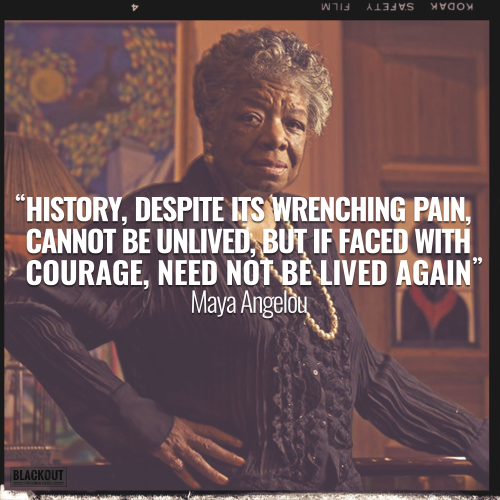
Over a three-day period, an estimated 100-240 blacks, with some estimates of more than 800 blacks killed, it was the deadliest racial conflict in United States history. Tulsa, Oklahoma massacre was a large-scale, racially motivated conflict on May 31 and June 1, 1921, in which a group of whites attacked the black community of Greenwood, the wealthiest black community in the United States was burned to the ground, police arrested and detained more than 6,000 black Greenwood residents at three local facilities. An estimated 10,000 blacks were left homeless, and 35 city blocks composed of 1,256 residences were destroyed by fire, resulting in over $26 million in damages. The official count of the dead vary from 150-300 cause there was a rush to bury the bodies and that no records were made of many burials. Rosewood massacre was a violent, racially motivated massacre of blacks and destruction of a black town that took place during the first week of January 1923 in rural Levy County, Florida. As many as 150 African Americans people were killed and the town of Rosewood was abandoned and destroyed. On May 1927, in Little Rock, Arkansas, there was the lynching of John Carter, a suspect in a murder, was followed by rioting by 5,000 whites in the city, who destroyed a black business area. The Detroit race riot broke out in June 1943, and lasted for three days before 6,000 Federal troops were called in to restore peace. A total of 34 people were killed, 25 of them black and most at the hands of police or guardsmen; 433 were wounded, 75 percent of them black; and property valued at $2 million was destroyed, Most of the property damage was in the black area of Paradise Valley, the poorest neighborhood of the city. Therefore, we will not get over a single thing. Jewish people rightfully never forget the Holocaust and the pogroms.
We won't forget the Maafa either.
By Timothy
No comments:
Post a Comment